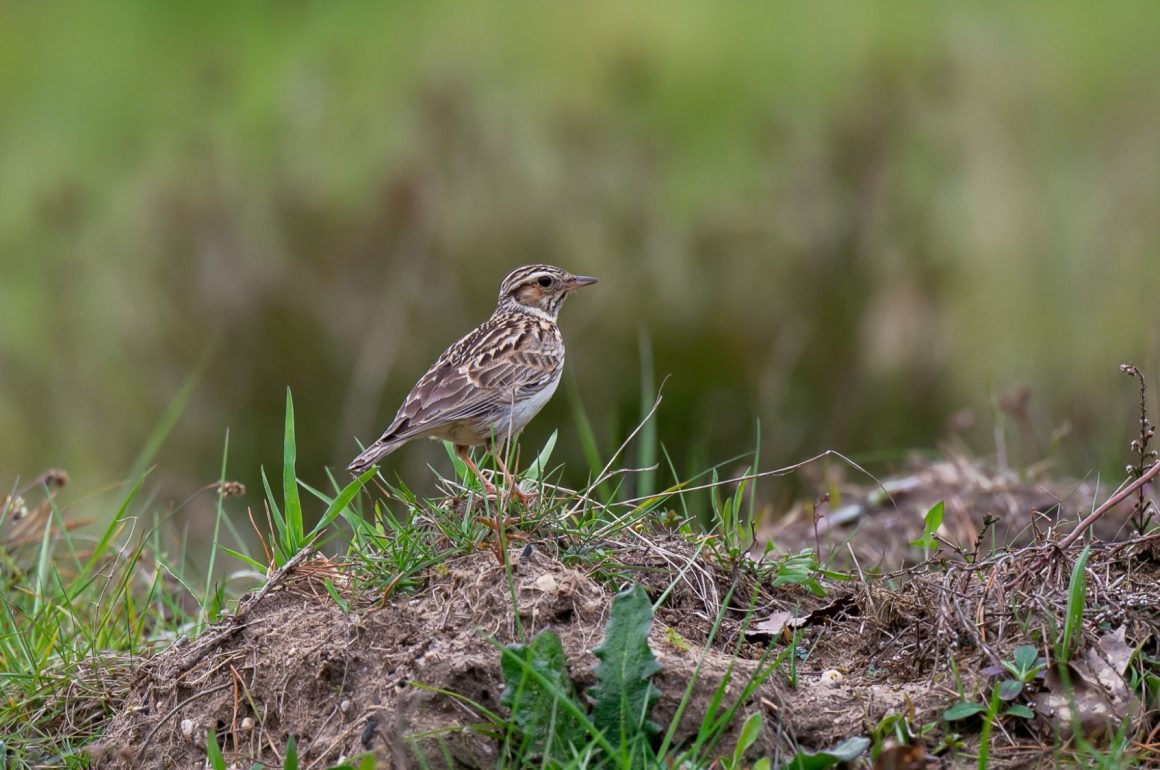
I had just been to Wahner Heide (heath) a few weeks ago and covered that visit in my last post, but I found myself back in the same area with my parents for a short Sunday visit. The heath is actually quite extensive and there are some other areas that I would like to explore, but we went to the same spot we were at last time because it is easiest to reach. More forested areas apparently hold good numbers of Woodcock, and Eurasian Nightjars are also around (although rare), so this site warrants several future visits.
On this visit, the sky was grey and it was windy all the time, which did not make for particularly good conditions. I was especially looking forward to take some better photos of the birds I saw last time, which I only managed partly. However, we were rewarded with excellent sightings, which more than made up for the limited photo opportunities. After all, I’d rather call myself a birder than a bird photographer, although I have to admit that I enjoy doing both more or less equally. I do feel that there is a slight separation into “tribes” of people who prefer calling themselves “birders” and others “bird photographers”, and that the former slightly look down on the latter (and perhaps vice versa?). I’m not sure if this is exclusively my limited experience, let me know! At least I have the feeling that placing the emphasis on observing rather than photographing birds is sometimes considered more ‘pure’, whatever that means… To escape the dichotomy, I would simply say that I’m a birder who loves photographing birds whenever the opportunity arises. Although then again if I say that, I better have good photos to justify this, which is often not the case (perhaps I could at least blame it on the weather this time?).
Common Stonechats and Tree Pipits were particularly active, like last time. A highlight for me was the display of the latter, with its slow-motion dive at the end of its display flight accompanied by its beautiful song.
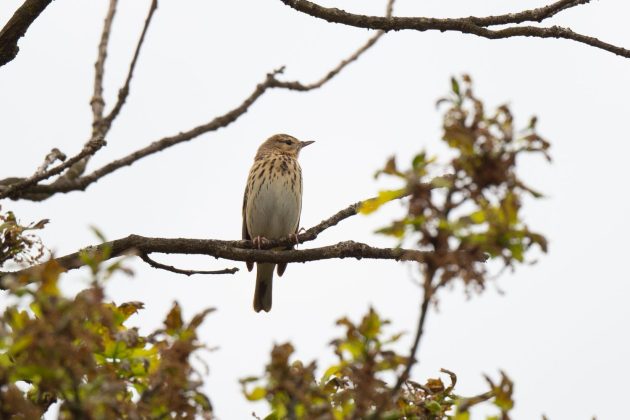
Woodlarks were quite regular as well, and we saw two or three pairs of these attractive birds in their song flight or feeding on the ground. I finally managed to obtain some acceptable photos of this species, which I did not manage on my last visit. The favourite part of this species for me (apart from its song) is the neat white “V” on the back of the head when the bird looks away from you (only slightly visible on the photo below).
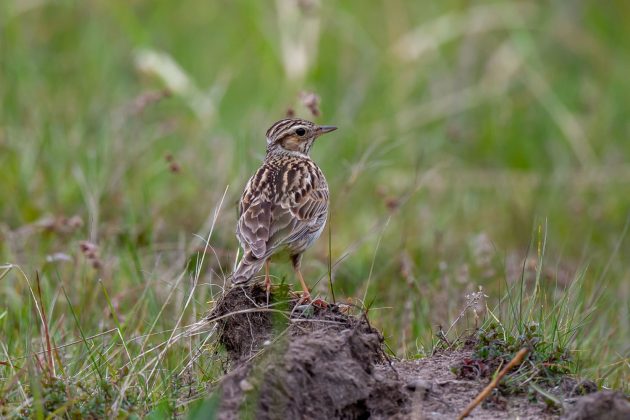
Walking along a sandy track, we suddenly heard the unmistakeable call of a Wryneck, which we spotted soon after in a bush at some distance. I knew that this species had been seen here two weeks earlier, but did not expect to see it at all. This unusual bird is definitely one of my favourite species in Europe, so I was very happy to connect with it (and to hear its call for the first time).
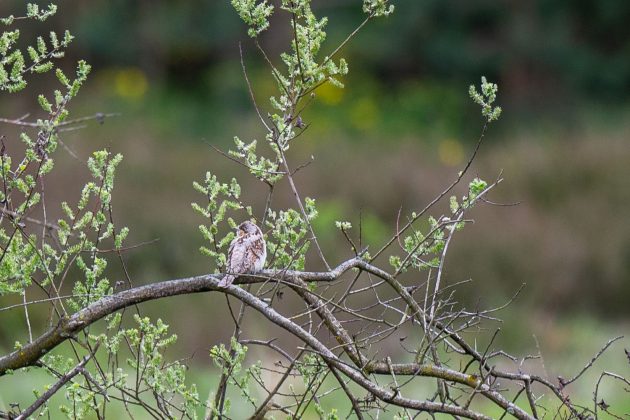
A Red-backed Shrike was perched on pine at the edge of the heath. It must’ve just returned from Subsaharan Africa a few days earlier I assume. While this bird is not uncommon in Germany, I have only seen this species once in the region around Bonn (which I should probably blame in part on the infrequency of my birding outings). Interestingly, this species’ German name “Neuntöter”, translating to “nine killer”, apparently comes from the assumption that it impales nine prey items before starting to feed on any one of them. While experiments have shown that some birds (like crows and parrots) can count, this rule unsurprisingly did not hold when subjected to testing. Not that truth matters here, I still think it’s a very cool name.
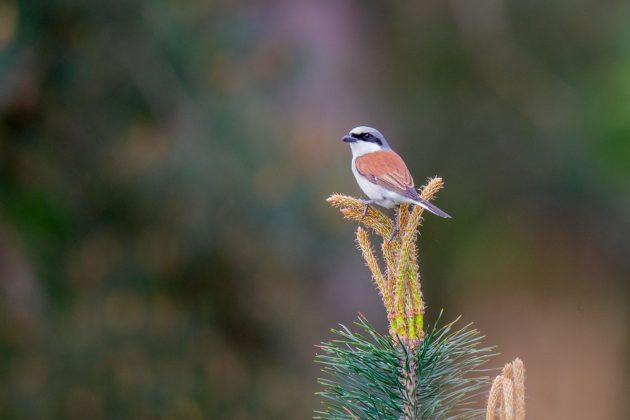
One of the last birds I saw before we returned home was a singing male European Pied Flycatcher. Incredibly, this was the first time I saw a male of this species in breeding plumage (plus the first time I heard its song, just as for the Wryneck). I have seen countless individuals, especially on migration on Heligoland in autumn last year, but somehow a beautifully pied male evaded me until now. These sightings really made me appreciate birding in spring, a very welcome change from the mostly bleak birding in winter.



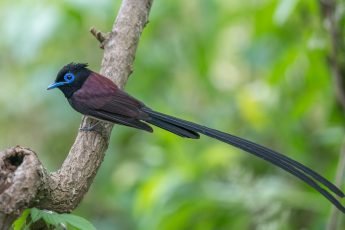
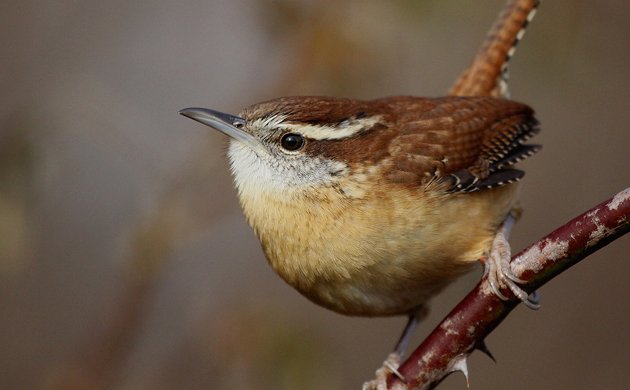

 New writers welcome – please contact us for details.
New writers welcome – please contact us for details.

















The more I engage with the concepts of what makes a birder or photographer is the less I identify with either. Interesting consideration and great piece!